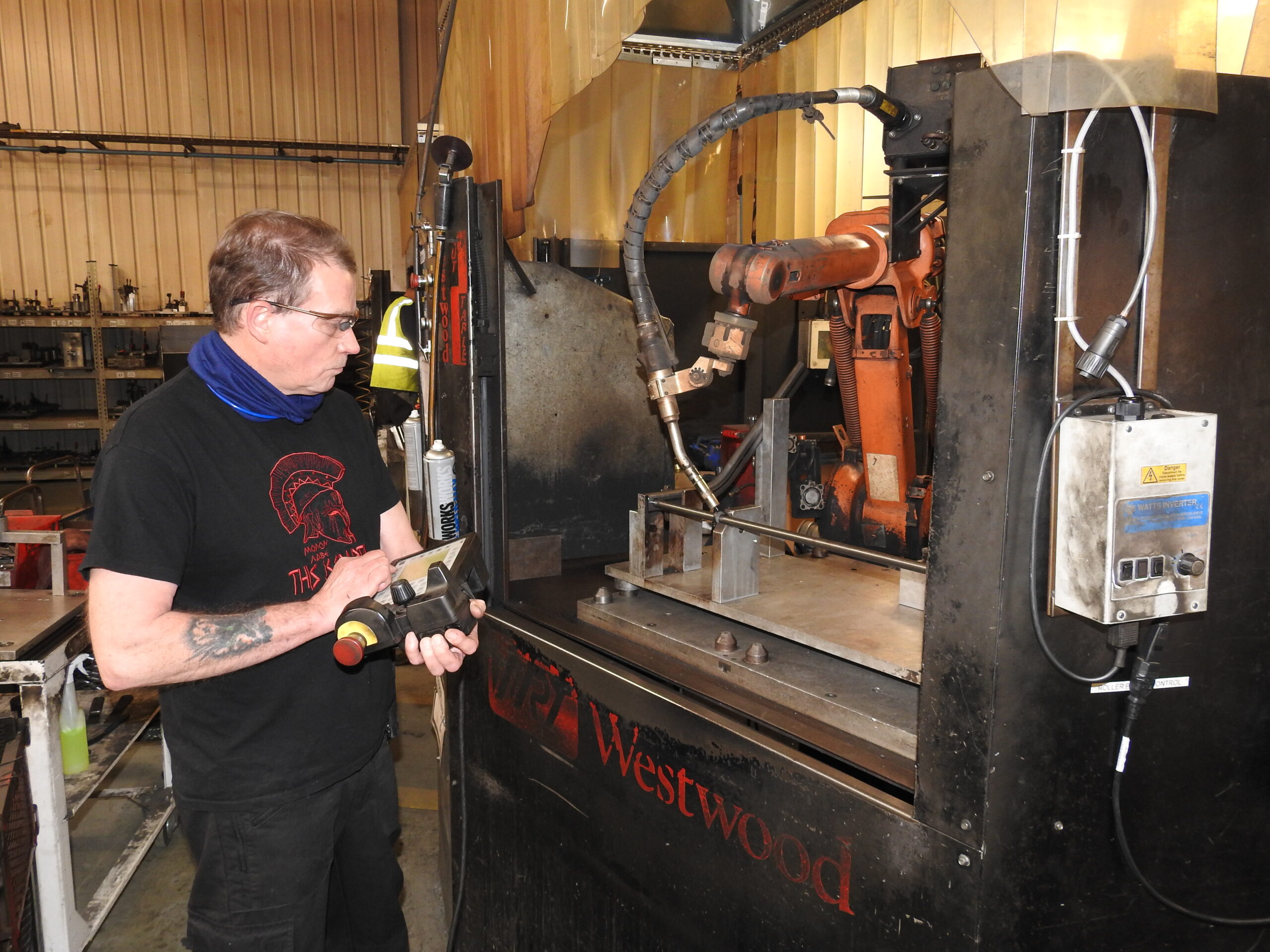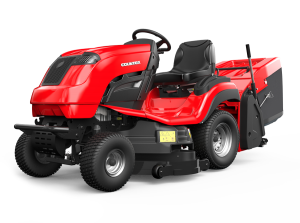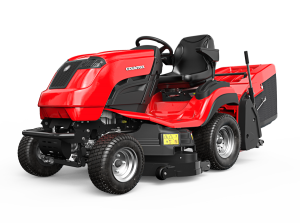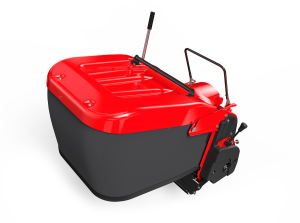Just like in a car, the chassis of a garden tractor is everything
It not only carries the weight of the engine, transmission and operator, but it must also help keep the cutting deck suspended and level whilst mowing. Quite often, the chassis is a major differentiator between a ‘built-to-last’ machine and one of the cheaper, throwaway import ride-ons that started to enter the market over the last 10 years. On a Countax, this strength is even more important as the heavy grass collector, often full of wet grass, must be lifted on the back of the machine when being transported to the cuttings pile for emptying. You can imagine the strain that this puts through the chassis and into the axles.
It can be a tough life for your tractor
Remember, there is no sprung suspension. The inevitable bumps and knocks of using your machine on a regular basis are absorbed directly into the tractor’s frame (hopefully ironed out by the time they get to you by the suspension springs in the seat).
Exposed to this level of hard treatment, a chassis built of a low-grade steel or one of poor design would inevitably warp and twist over time and, just like with your car, would probably write-off the machine. Once the chassis is bent, it can be a very difficult and expensive fix.
The grade of steel is not the only consideration though. The weakest point of the chassis is often where it is joined together. These days, most tractor chassis are welded and a Countax is no exception. However, how a unit is welded makes all the difference. A weak weld makes for a possible disaster down the line and extra special care is taken at Countax to ensure that not only are our chassis built strong, but they are also built true.
Derek Davis is a bit of a legend at our Great Haseley plant. If you’ve purchased your Countax in the last 20 years, the chances are, Derek welded up the chassis. Well… sort of….

For the last 16 years, Derek has been programming and running the five ABB MiG welders used at Countax. Essentially, these are robot arms with a MiG welder for hands. They operate incredibly fast and work with a level of consistency that can be difficult to achieve by mere mortals. Alongside the bank of robots however, a row of welding bays spark and illuminate as a team of highly-skilled technicians weld together various elements of the tractor. If you have ever tried welding yourself or indeed watched an expert at work, you will probably appreciate just how much of a skill it really is. It is relatively easy to make a weld, but it takes hundreds of hours of practice to master this technique. Here at Countax, we’re lucky to have some of the best in the industry, real craftsmen who can make this near impossible skill look very easy indeed.
Why, Robot?
Given the talent that we have in-house, why use robots at all? Derek explains this for us:
“Robots are suited to certain tasks and not others. Of course, they can only follow a set programme. If they run into any sort of anomaly or problem, there is no intelligence there to deviate from that plan. I guess this decides which jobs that they will be good at and which they won’t be.

“Something like a chassis is the perfect job for a robot welder. We use a welding fixture in the bed [of the robot]. This is a bit like a jig, but allows the robot’s arm to move freely around the job. All the frame elements are firmly locked into place and I tell the robot exactly where the fixture is located on the bed relative to its starting position. Once the programme is up and running, the robot will systematically weld along the seams of the frame according to the instruction of the programme. Because we’re using a dead-level bed and fixture along with the precision of the computer-controlled robot arm, we know that the chassis will be kept perfectly true and without any warping.”
What Derek says certainly seems to make a lot of sense. When there is a need for precision, it’s easy to see that robot welders would offer high quality results. But why not use them for everything? Surely they are cheaper to operate than paying the wage of technician? Derek explains more:
“The robot is great at completing the simple welds. Pretty much anything using straight lines or 90 degree angles it can handle well. The problem is, designs are often more complicated than that. We have multiple weld patterns on a Countax which require welding along curves or up in creases, often in hard-to-access areas. In these cases, there is no substitute for a human. They have the skill to be able to adapt their work to account for any small variation in manufacture and to weld up sections that would be impossible to load into a robot welder.”
Even with advancements in artificial intelligence, it’s difficult to imagine a time that robots will fully take over from humans in the welding bay. Sure they work faster (and rarely take a tea break), but its good to know that somethings are still best managed by skilled technicians.
So, think about Derek and his team of (as yet unnamed) robots next time you use your Countax. In fact, when you’re next checking the tyre pressure or cleaning the deck, take a minute to look around at the chassis of your tractor. See just how tough it is. The time and care taken into this work is easy to overlook and to take for granted, but it is this sort of detail that sets Countax apart and has built us the worldwide reputation as being the toughest machine in the market.

 C Series
C Series B Series 4WD
B Series 4WD Accessories
Accessories
